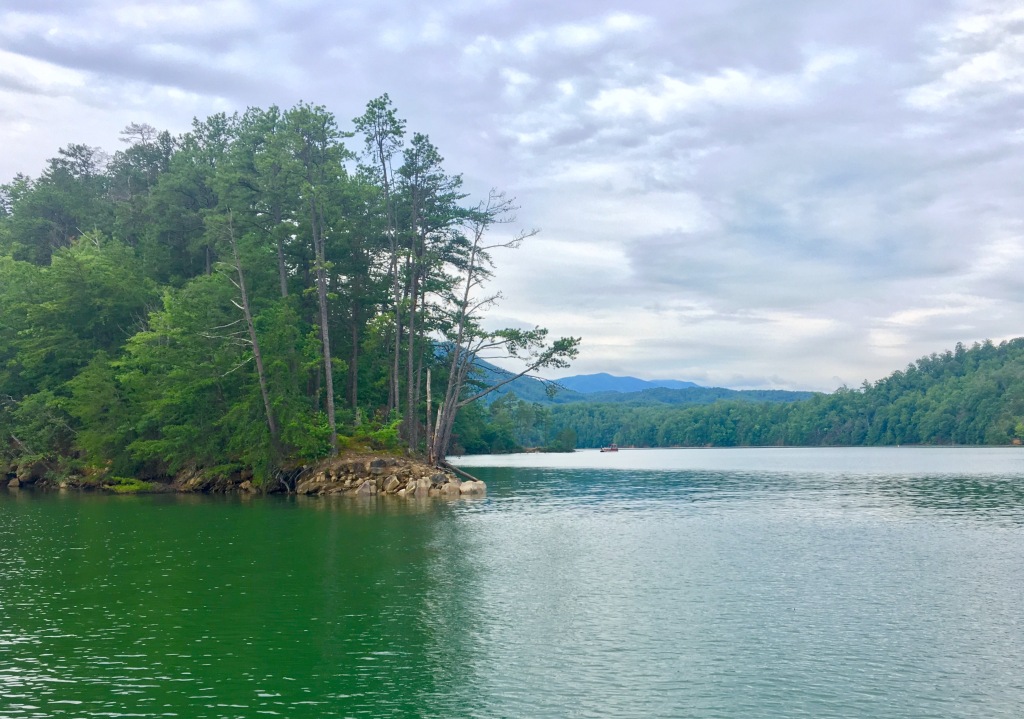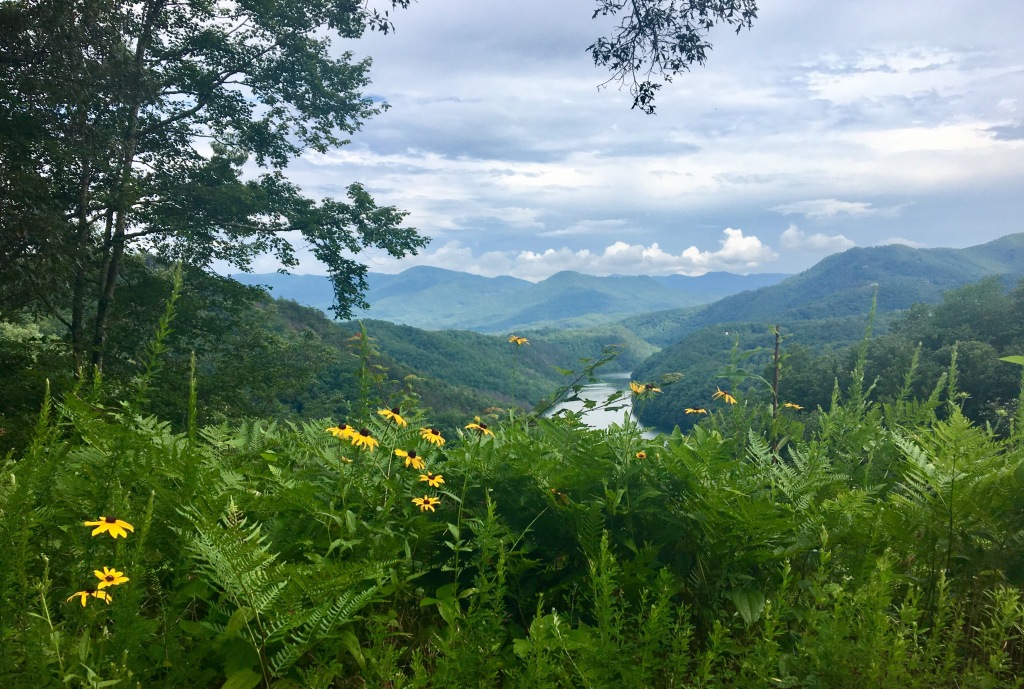Lakeside Drive. It was a typical enough road, climbing out of downtown as it took us past a school and houses and farms. Typical enough, at least, until we rounded a corner and saw the sign that let us know we were on the Road to Nowhere.
Fontana Lake is beautiful. Mountains drop straight down to its’ tourquoise-green waters while fish jump and bald eagles fly overhead. It twists and turns through 30 miles and is so remote that you rarely see another boat. But, it’s what’s underneath the lake that is the most interesting.

In the 1940’s, WWII had finally reached America and an increase in aluminum was needed for wartime efforts. The rugged and remote valley of the Little Tennessee River was chosen to create a dam to produce electricity for the ALCOA aluminum plant in Tennessee as well as for Oak Ridge National Laboratory’s Manhattan Project.
The valley was filled with small towns. People who had been there for generations, working in mines or for lumber companies. People who loved the beauty and isolation of the area. Old Highway 288 connected these communities to each other and to their cemeteries. But, because of the war, things moved fast and, before they knew it, more than 1300 families were forced to leave the area. The TVA built the dam, the tallest in the east, in a little over two years and Fontana Lake was formed, submerging the towns and Highway 288 far below.
The towns were gone but the Federal government promised to replace Highway 288 with a new road. The road was to hug the north shore of Fontana Lake from Bryson City to Fontana, providing a way for the former residents to have access to the generations that remained behind in the old family cemeteries.
Construction began on Lakeview Drive in Bryson City. The road entered the Great Smoky Mountain National Park and everything was going well until an environmental issue halted construction. The issue was eventually resolved, but construction of the road never resumed.

The road now follows the lake about six miles into the park and abruptly ends at a tunnel. It truly is a “Road to Nowhere”. You can now park at the tunnel and hike through it. Once through the tunnel, the asphalt ends and half finished guard rails give way to hiking trails that continue around the lake.


And the cemeteries still remain, more quiet and isolated than ever. The only way to access them is by hiking in or taking a ferry that the Park Service offers during the summer so former residents can visit their ancestors. One of the only reminders that this was once a valley filled with small towns bustling with activity.
Below is a map of the area. You can reach the tunnel by taking Lakeview Dr. East (aka the Road to Nowhere) out of Bryson City. The road ends at a parking area near the tunnel.



